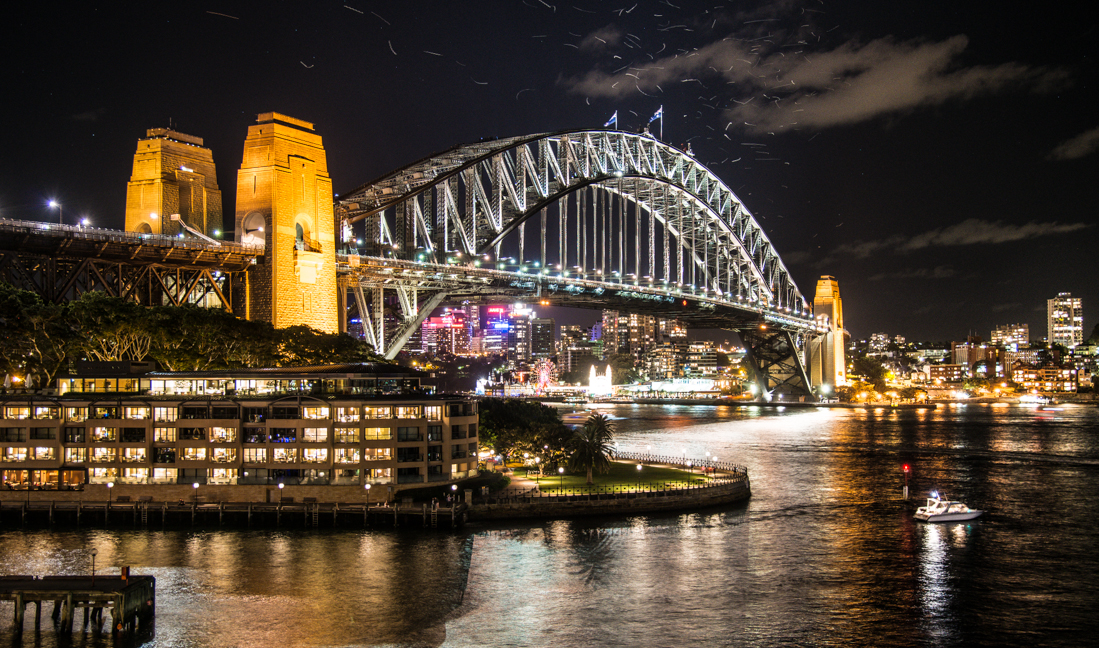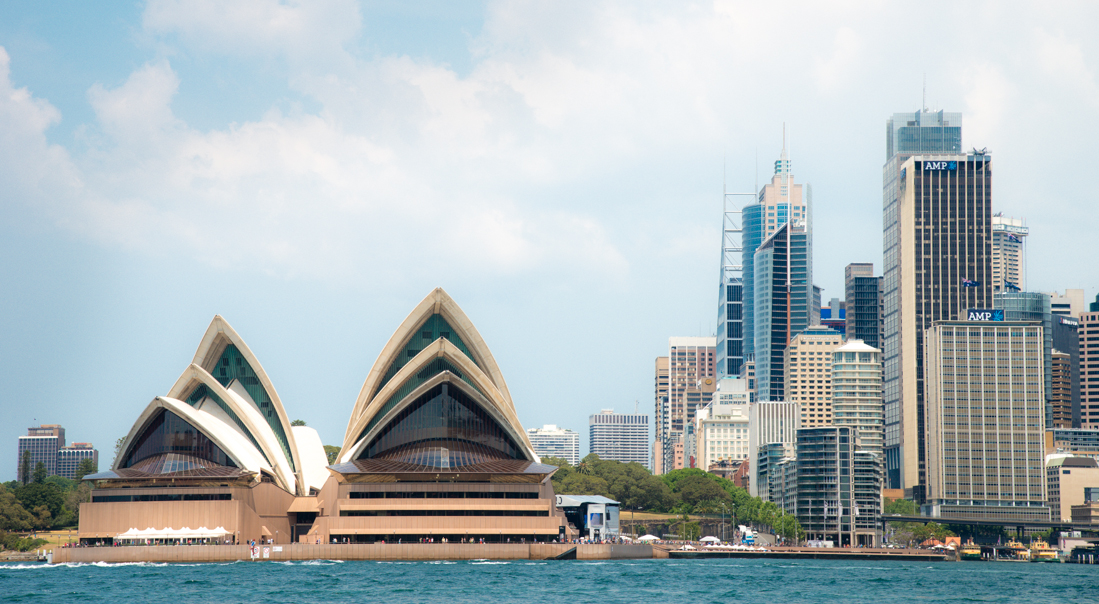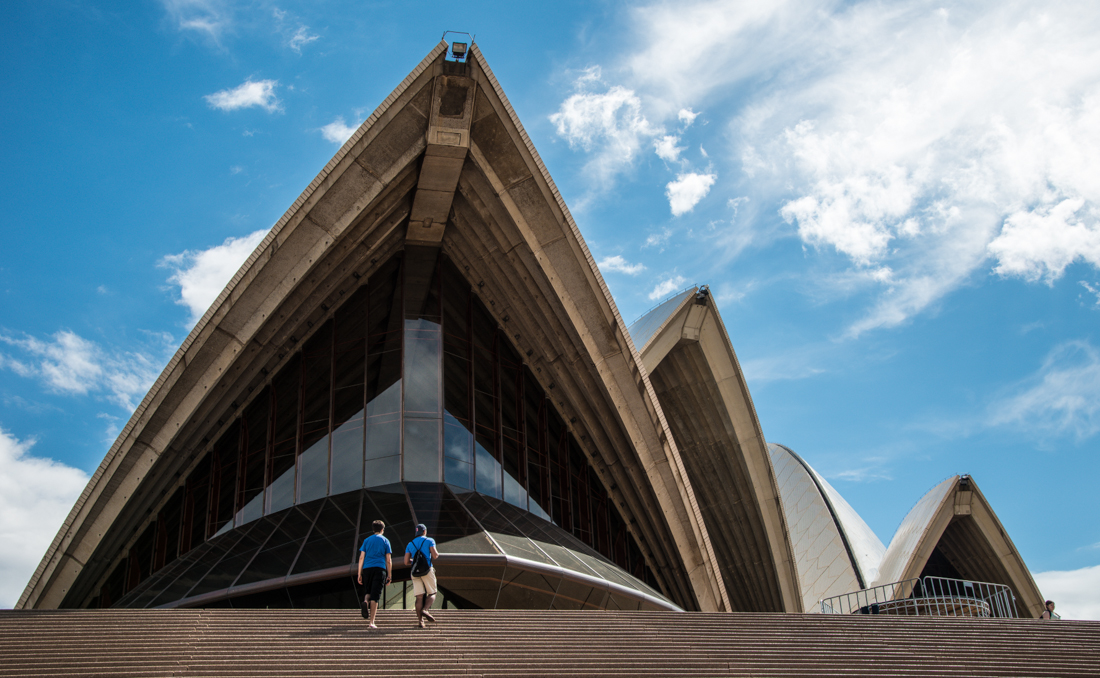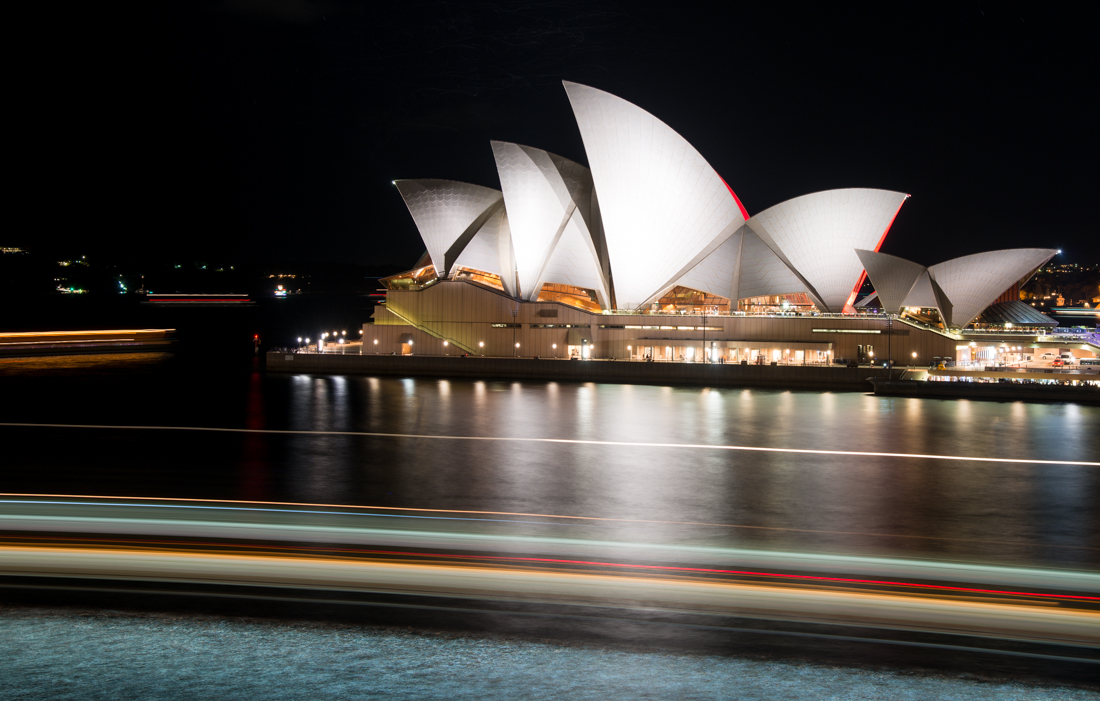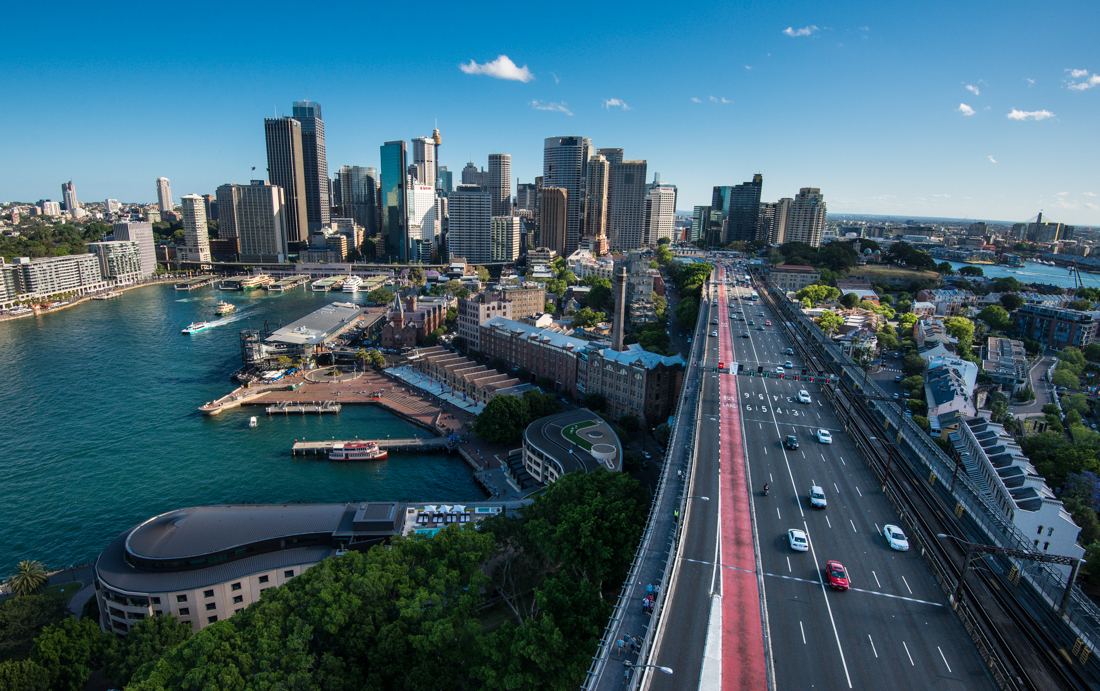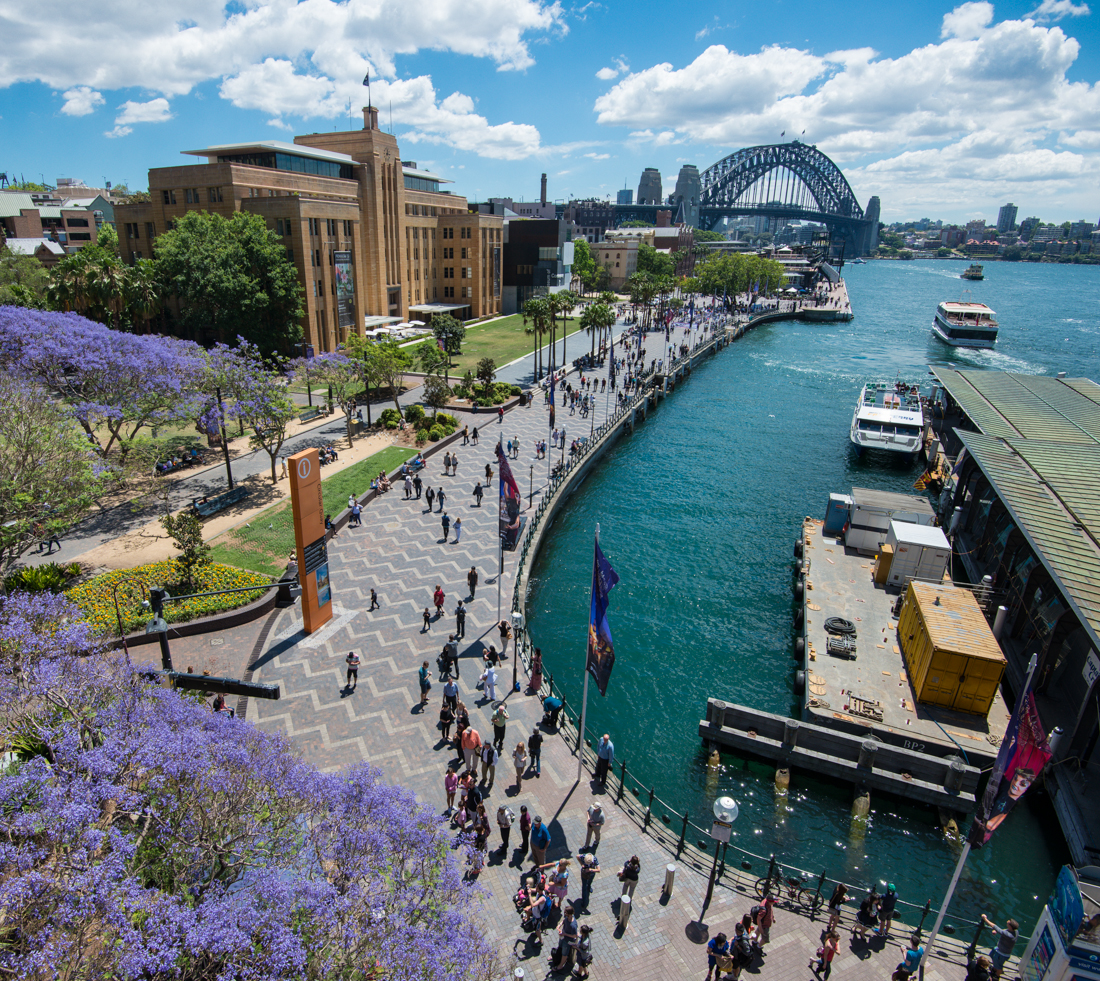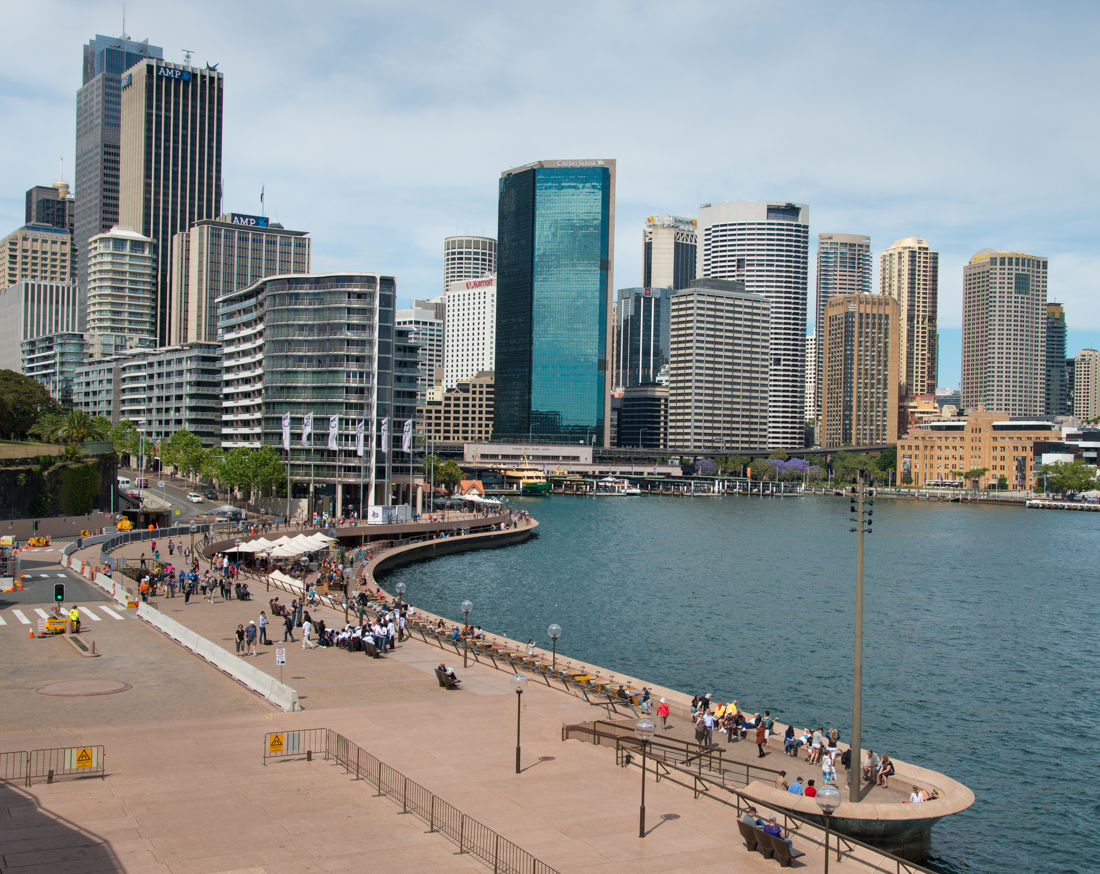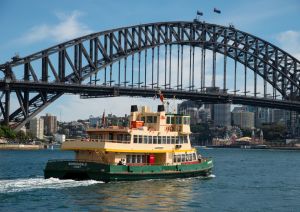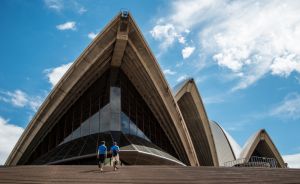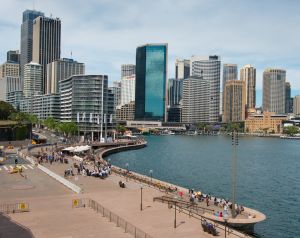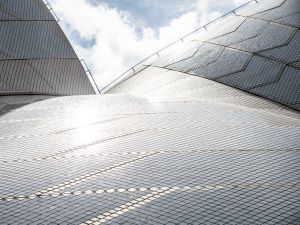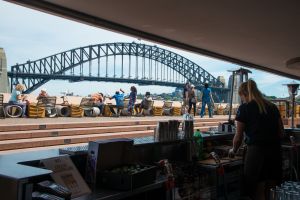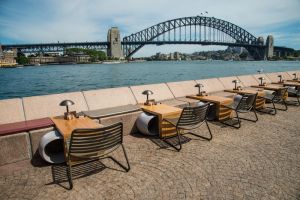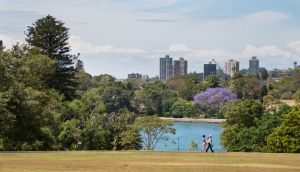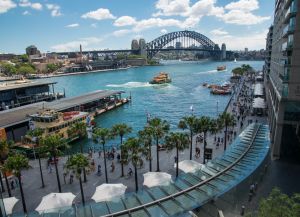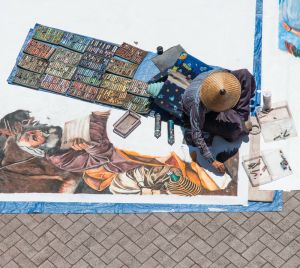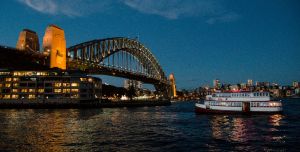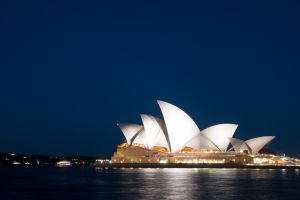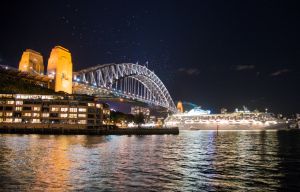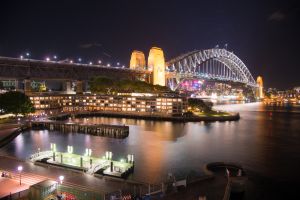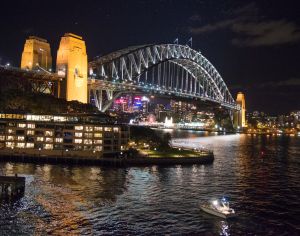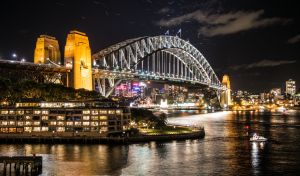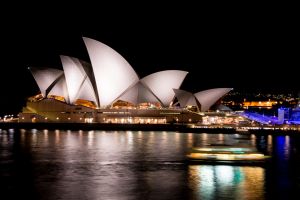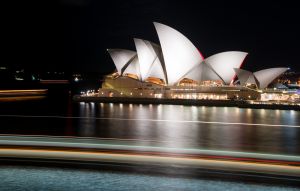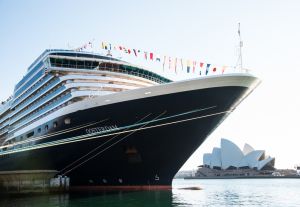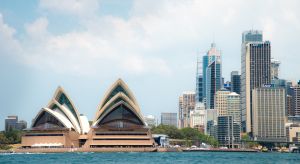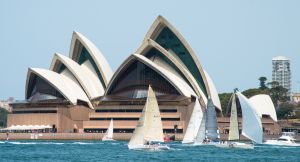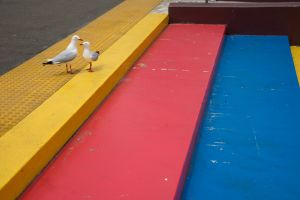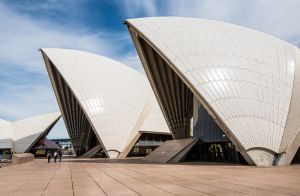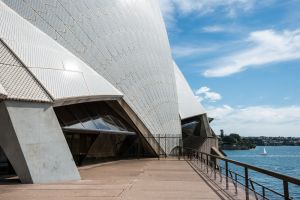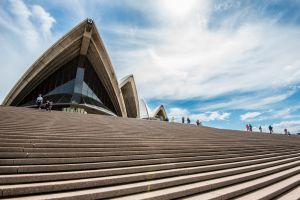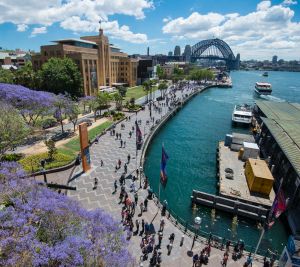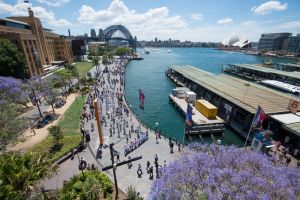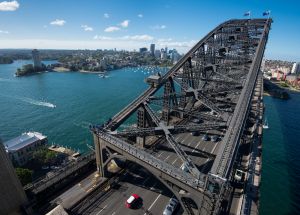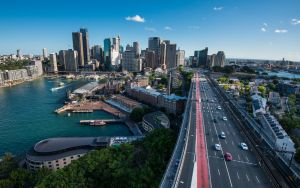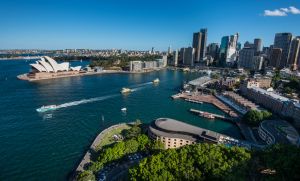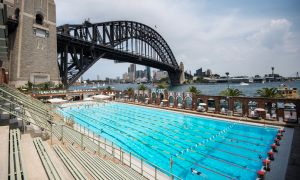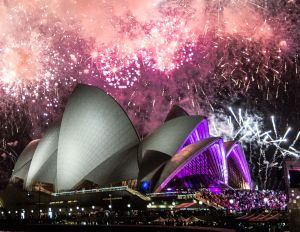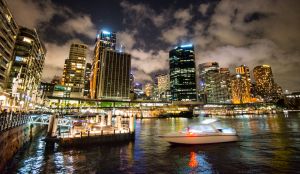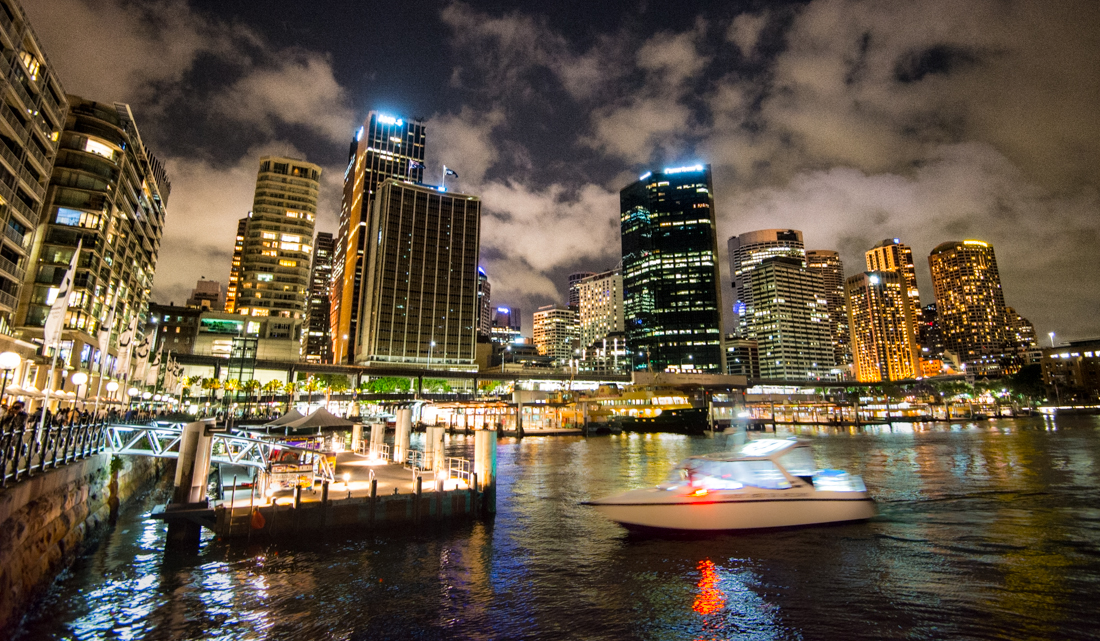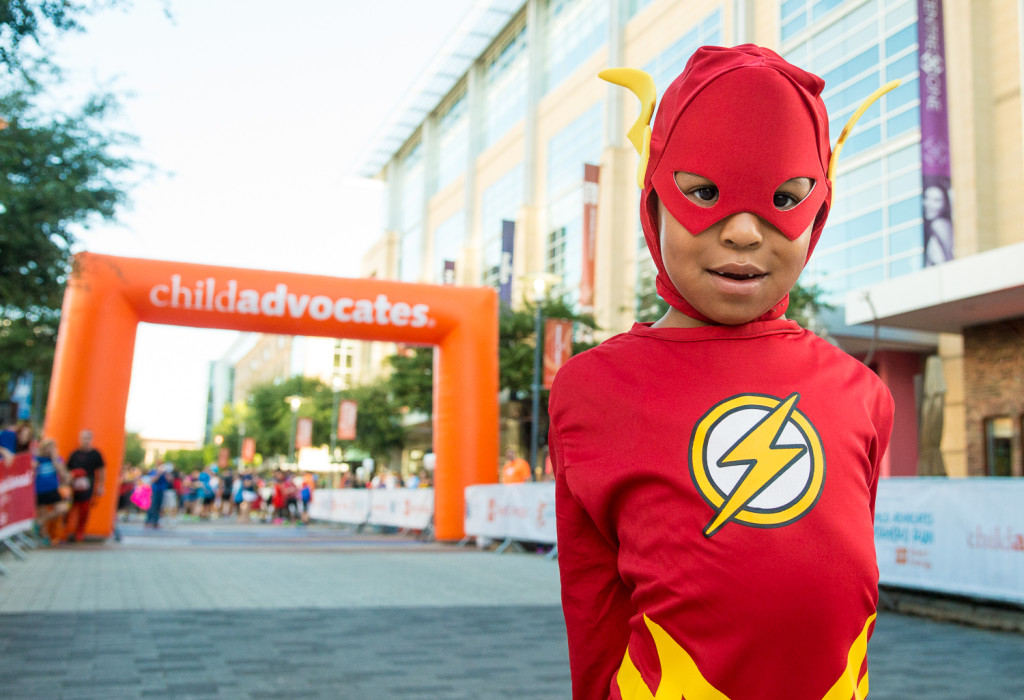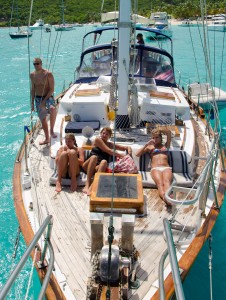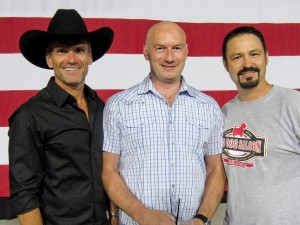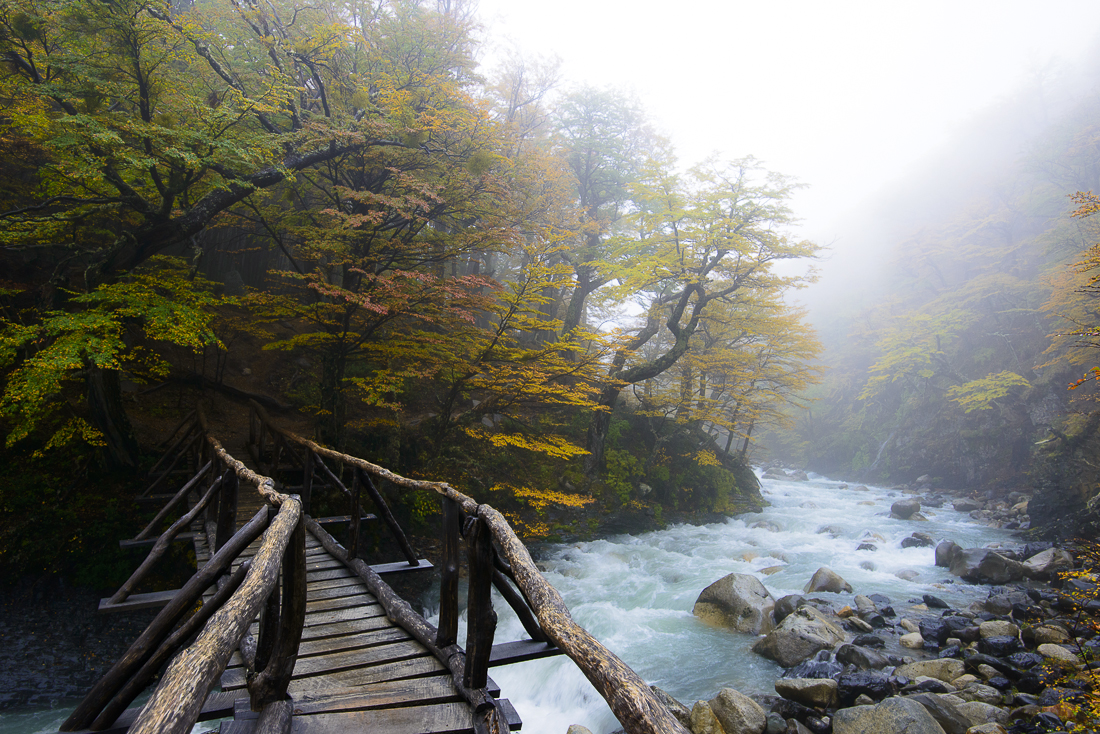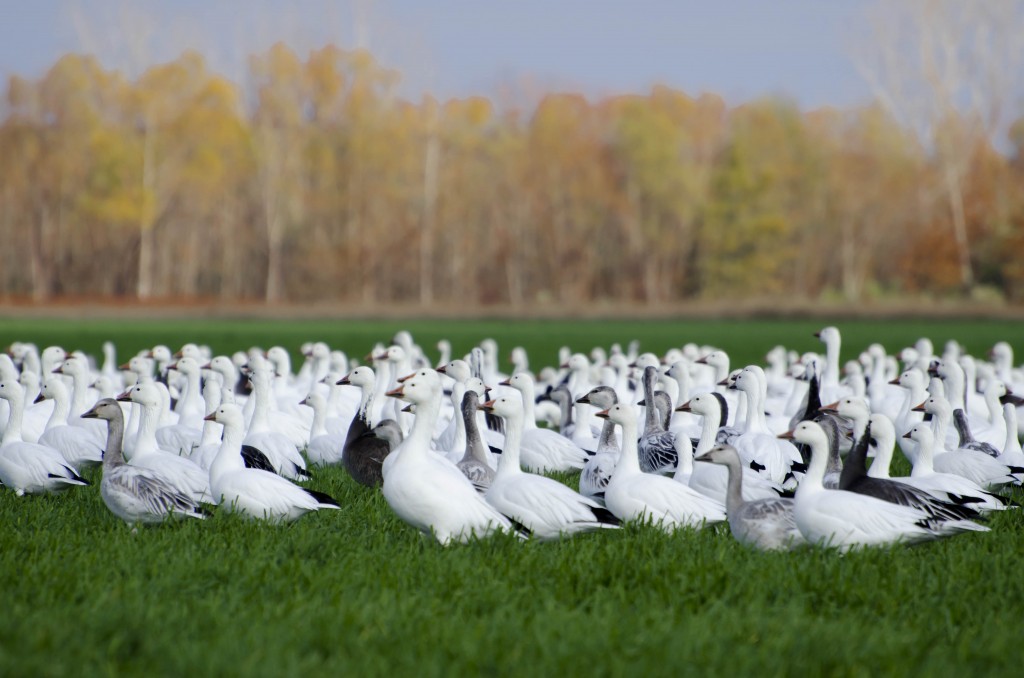Australian sundials are numbered backward. If you want to navigate your way around Sydney, it might help if you understand why.
Since America is well up in the Northern Hemisphere, the sun’s daily path for us is mostly an arc through the southern skies. As we face south and watch the sun move east to west, it moves from our left to our right. If we’re looking at the sun, it’s moving left to right. If the sun is in your face and it’s roughly the middle of the day, you’re looking south; left is east; right is west. Unless you were literally bent over backward, every time you’ve ever looked at the sun in the northern hemisphere, it was moving left to right . This is burned into my subconscious. Left to right.
When I got to Australia, I was ready for cars driving on the wrong side of the road. With a 20-hour trip crossing eight time zones, I was ready for jet lag. I’ve been to the Southern Hemisphere before, so I was ready to hang precariously by my feet from the bottom of the globe and to see spring flowers in late October. I can deal with hurricanes and toilet drains that swirl backward (though that last one is mostly a myth). But what I cannot mentally process is that the sun moves from right to left. It arcs across the northern sky. It’s clearly moving right to left, so I’d swear it’s rising in the west and setting in the east. (It’s not.)
I’m not the only one who’s noticed, of course. On a northern hemisphere sundial, the numbers that indicate the time count up clockwise. Southern hemisphere sundials reflect the left/right reversal of the sun’s apparent path, with the numbers ascending as you go counter-clockwise. Your trusty northern sundial is no good down under.
For millenia, we humans have plotted our courses through the day and across the earth by keeping track of the relationship between the sun’s location in the sky and the actual time of day. A great book called Longitude, by Dava Sobel, teaches this lesson in the context of 18th Century nautical navigation.
I’m usually a pretty good intuitive navigator, but it’s a cruel triple-whammy to jet-lag my body’s internal clock, capsize my brain’s intuitive internal sundial, and drop me in terra incognita. So I guess I was a little dazed and confused during my two day layover in Sydney. Fortunately, I was almost always in sight of at least one of the city’s two main iconic landmarks – the Sydney Harbour Bridge and the Sydney Opera House. So while I was sometimes confused about where the sun would be coming from in my photographs, I never actually got lost.
* * *
The Sydney Opera House was celebrating its 40th Anniversary the weekend I was there. I wasn’t invited to the party, but I did get to overhear some of the big celebration concert (ironically held outdoors) and grab a couple of quick pictures of the unexpected 15-second fireworks display. The shots that look like aerial photographs were taken from atop one of the granite “pylons” of the bridge.
Those weird swirls up above the bridge are birds (gulls) and bats (“flying foxes”). They’re up there eating the moths that are attracted by the bright lights. Because the shutter speed on the camera is so slow at night, the bird/bat travels several feet while the shutter is open, leaving a trail of its path in the image.
Photo friends: Most of the night shots (except the fireworks) of the bridge and the opera house are on a solid tripod, using ISOs close to 100-400, playing with different shutter speeds (up to 30 seconds, triggered by the self-timer to avoid moving the camera) to get the different looks for the moving boats and waves. The shot with mostly skyscrapers at night is handheld, with ISO 6400, f4, 1/6 sec.
